The early history and evolution of the Narmada struggle against the Sardar Sarovar Project (SSP) has been put up here through the interviews of 11 senior people involved in the struggle. The list of these people, with the links to their narrations is given below. This list is followed by a summary of the broad sequence of events from 1961 to the formation of the Narmada Bachao Andolan (NBA) in the eighties covered in these narrations. The summary of early history in text format is available here.
The list of people with links to their narrations is given below.
Mulji (bhai) Tadvi
Village Kevadia, Kevadia Colony, Gujarat
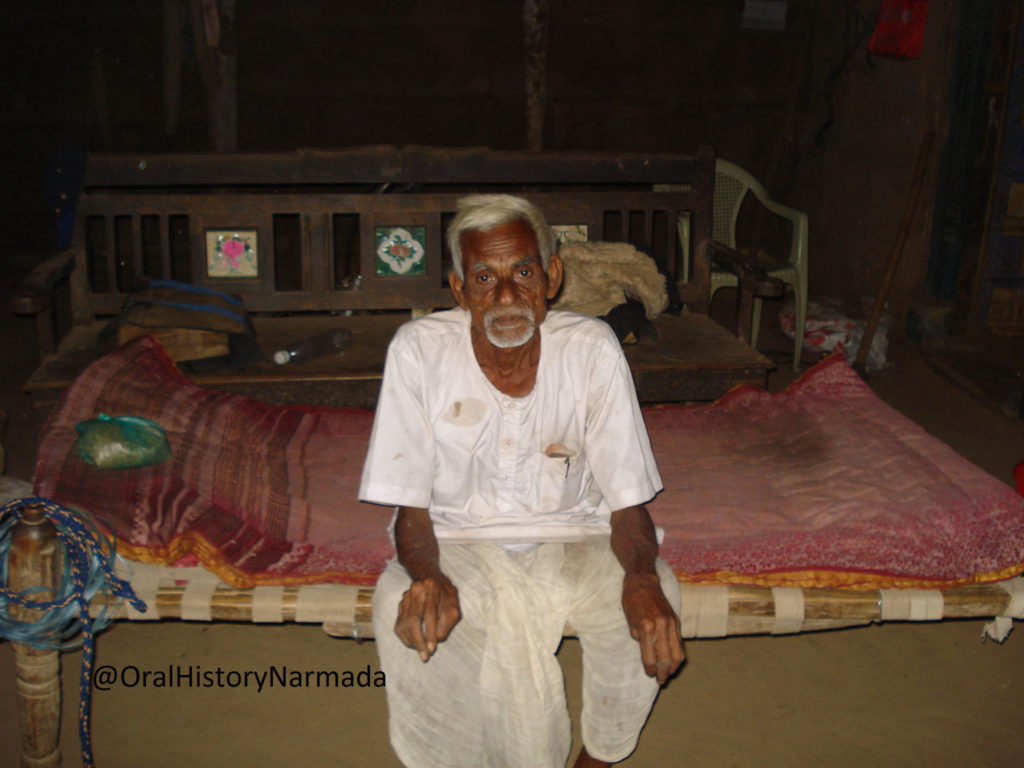
Muljibhai witnessed the laying of the foundation stone of the Navagam Dam (later the Sardar Sarovar dam) by Prime Minister Jawaharlal Nehru in 1961, at Navagam village, near Kevadia Colony, Gujarat. He talks about that, the acquisition of adivasi lands in 1961 for project colony, the resistance of that time, and the many issues concerning the displcement of adivasi community for the construction of Kevadia Colony (earlier the Sardar Sarovar Project colony and now famous for the world’s tallest statute, the Statue of Unity). Importantly, the people affected by Kevadia Colony continue to fight even today for justice as this is being written in 2021 as more and more of their lands acquired for SSP are being diverted for Statue of Unity related tourism. It is therefore rightly said by Rahul Banerjee, a senior activist and a writer that, “The people of Kevadia were possibly the bravest of all those who fought against the SSP.”
Interview Duration: 00:34:24
Language: Audio in Gujarati, Subtitles in English
Dalsukh (bhai) Tadvi
Village Gora, Kevadia Colony, Gujarat
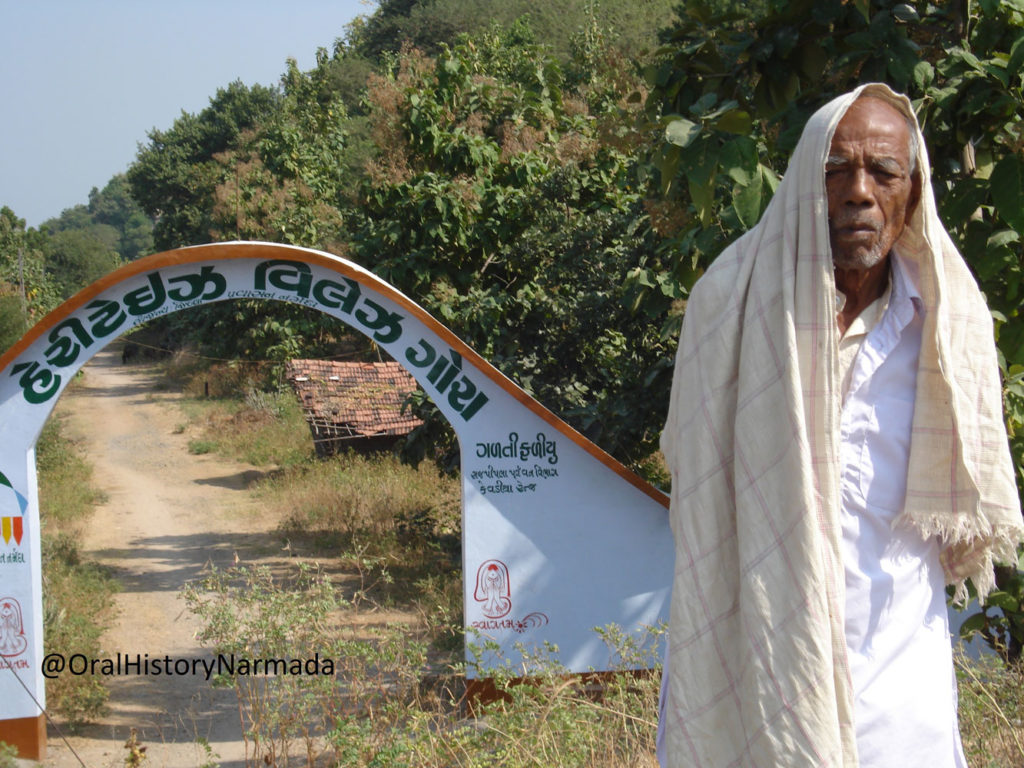
A young man in 1961 when the foundation stone of the Navagam Dam (later the Sardar Sarovar dam) was laid by Prime Minister Jawaharlal Nehru. Talks about the struggle of the people affected by Kevadia Colony back then till the formation of the Narmada Bachao Andolan. Kevadia Colony built on the lands of the adivasi community for the Sardar Sarovar Project, is today famous for the tallest statue in the world, the Statue of Unity.
Interview duration: OO:15:00
Language: Audio in Gujarati, Subtitles in English
Parasmal (ji) Karnavat
Submergence village Nisarpur, Madhya Pradesh (M.P.)
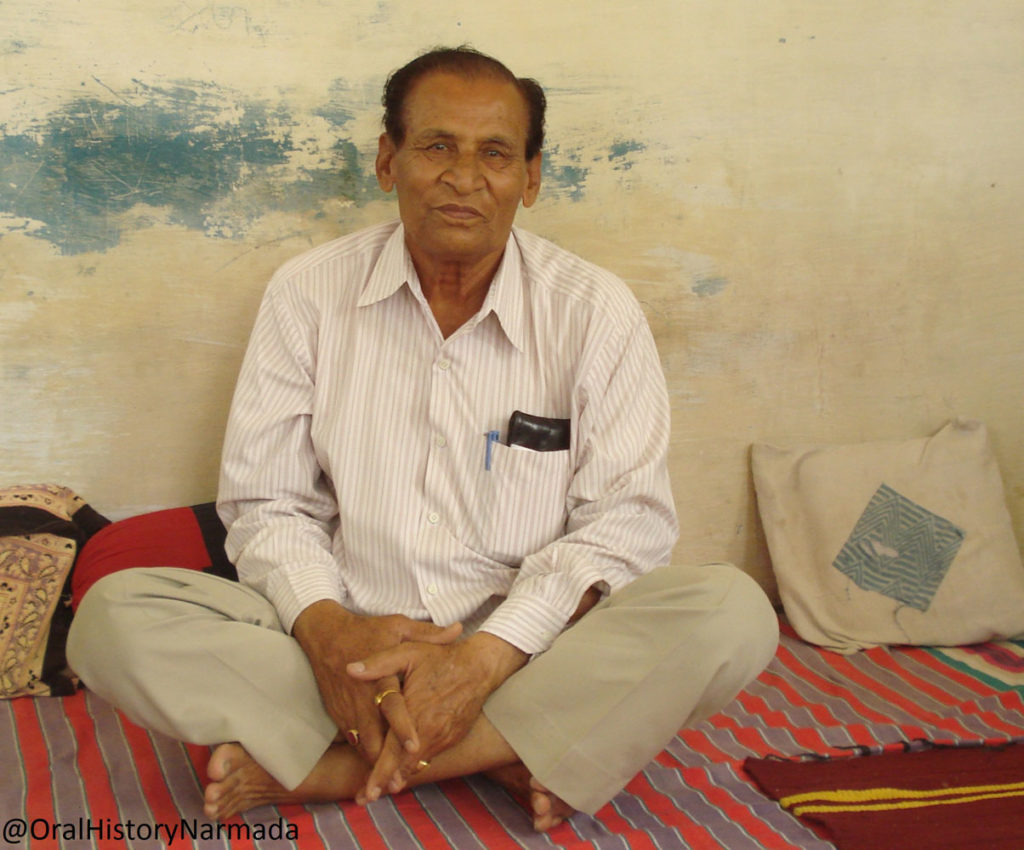
Was at the forefront of the Nimad Bachao Andolan, the struggle that emerged in Nimad region of M.P. after the declaration of Narmada Water Dispute Tribunal (NWDT) award in 1979. He talks about the rise and fall of this powerful movement and the formation of Narmada Ghati Nav Nirman Samiti whose founding member he was.
Interview duration: 1:22:11
Language: Audio in Hindi, Subtitles in English
Prabhakar (ji) Madlik
Narmada Ghati Navnirman Samiti, Indore, Madhya Pradesh (M.P.)
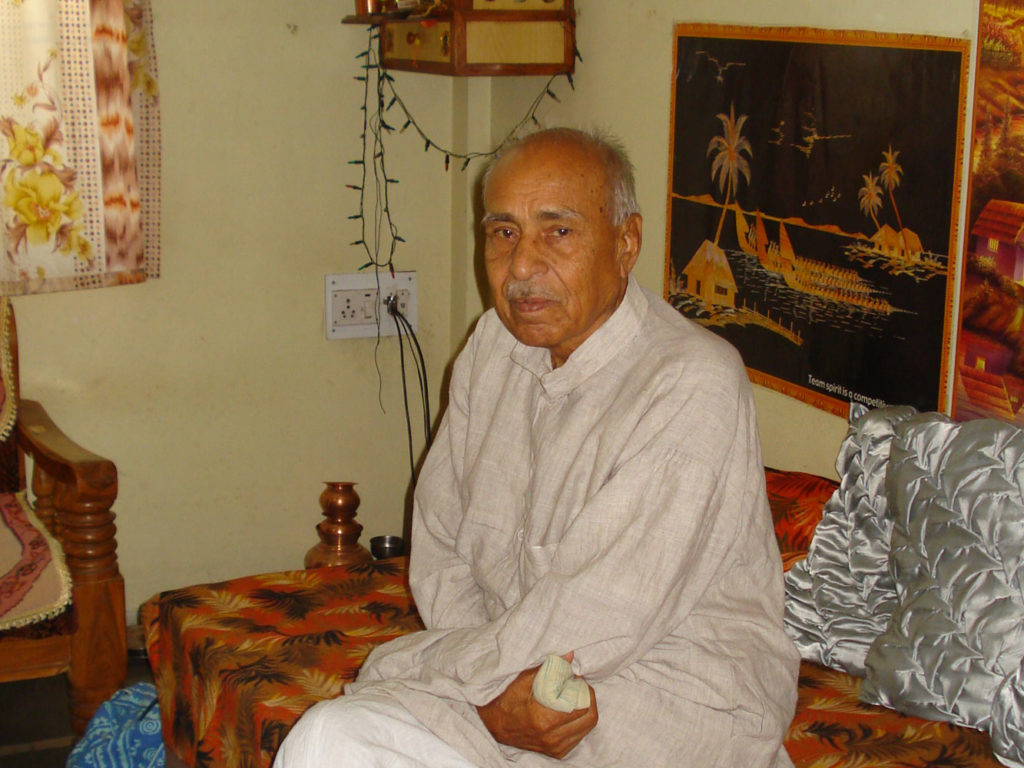
Senior Gandhian and a founding member of Narmada Ghati Navnirman Samiti (NGNS) in M.P. He talks in detail about the formation and work of NGNS in the late 1970s and early and mid 1980s.
Interview duration: 0:32:12
Language: Audio in Hindi, Subtitles in English
Kashiram (Kaka) Maru
Badwani, Madhya Pradesh (M.P.)
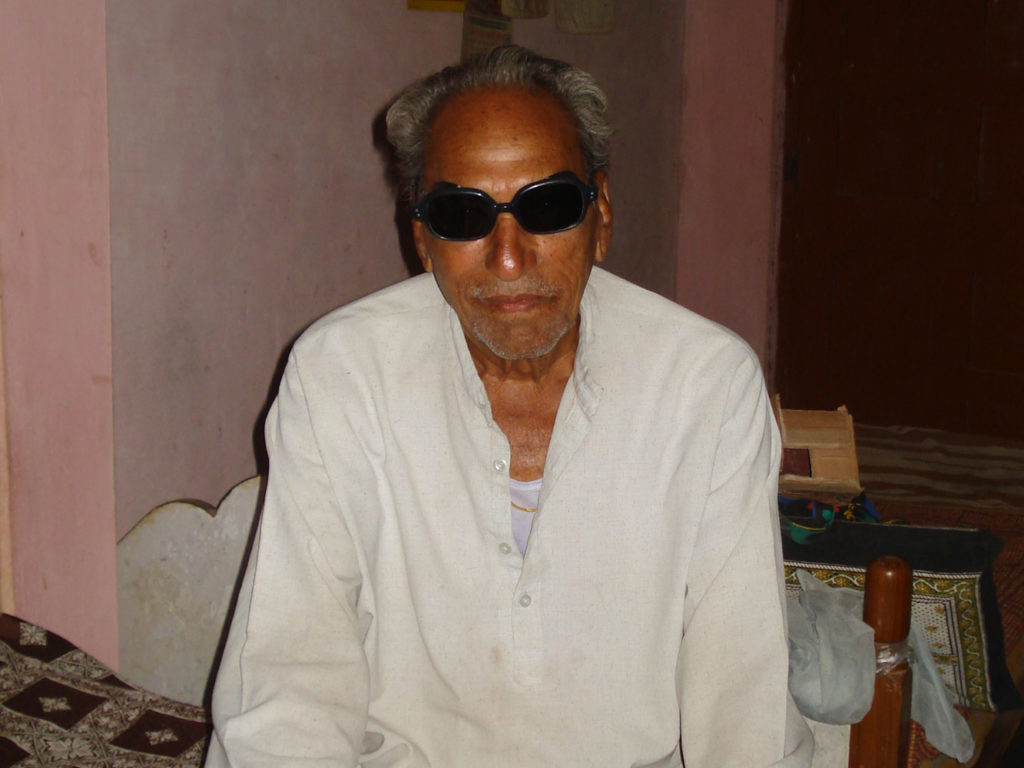
A farmer from the village Ekalra in Nimad, M.P., affected by the submergence of Sardar Sarovar Project, he was at the forefront of the Nimad Bachao Andolan. His narration helps us understand the emergence of the Nimad Bachao Andolan in late 1970s, and the political events around it.
Interview duration: 00:30:45
Language: Audio in Hindi, Subtitles in English
Anil (bhai) Trivedi
Senior Advocate, Indore, Madhya Pradesh (M.P.)
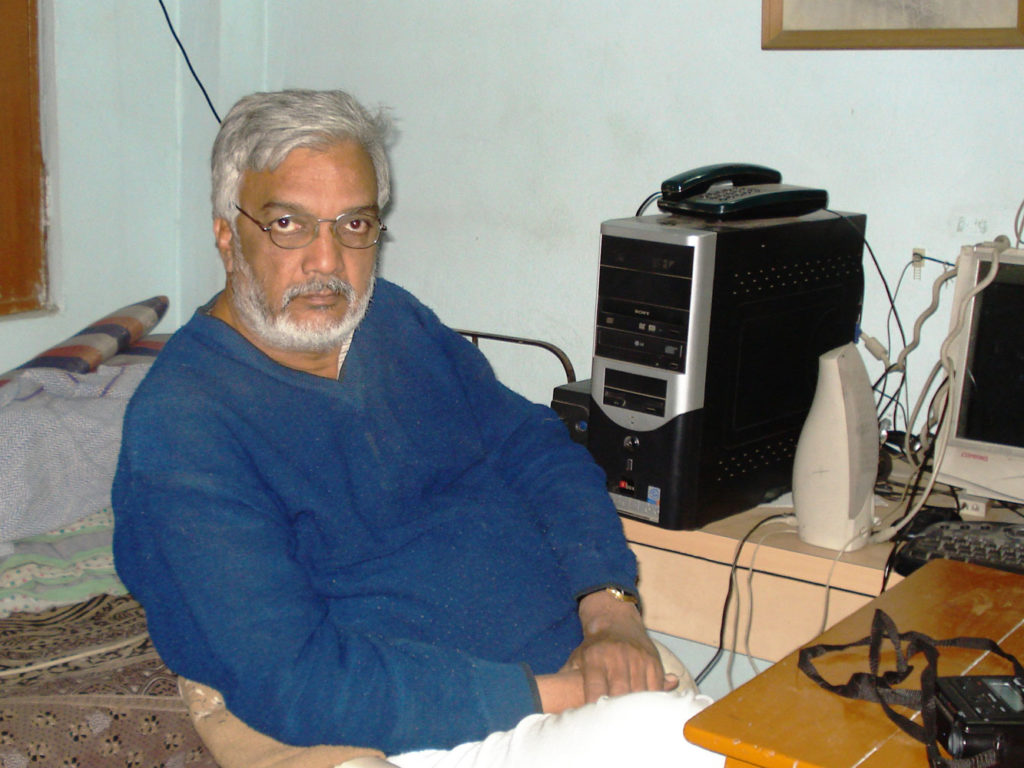
Anil Trivedi, popularly known as Anilbhai has been a social and political activist, associated with many movements and campaigns in M.P., and is a part of the support group for Narmada Bachao Andolan. Anilbhai’s father Late Kashinathji Trivedi a Gandhian and a freedom fighter was one of the founding members of Narmada Ghati Navnirman Samiti. Anilbhai talks of the early politics in M.P. and issue of dams, the Nimad Bachao Andolan and the Narmada Ghati Navnirman Samiti.
Interview duration: 1:27:41
Language: Audio in Hindi, Subtitles in English
Ashish Kothari
Kalpavriksh Environment Action Group, Pune, Maharashtra
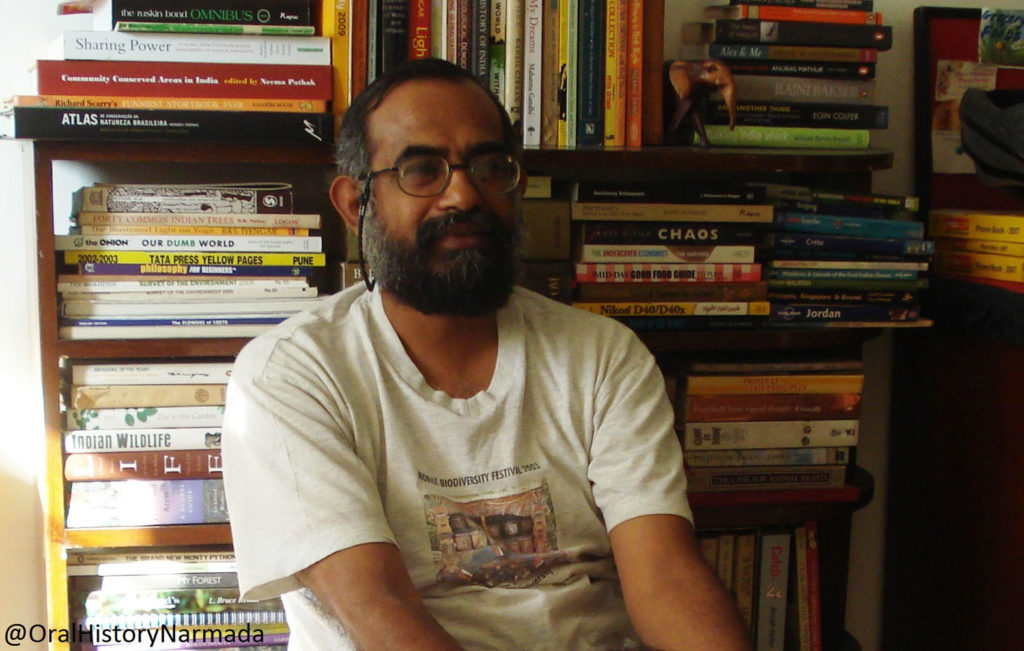
Ashish Kothari is one of the leading environmentalists of the country. He as part of a team led a walk along the Narmada River in the early 1980s on the issue of dams in the basin. He helps us understand the emergence of the environment issues around the Narmada dams in the early 1980s, the important players of the time and the emergence of the Narmada Bachao Andolan.
Interview duration: 0:50:59
Language: Audio in English, Subtitles in Hindi
Dr. Vasudha Dhagamwar
Multiple Action Research Group (MARG), New Delhi
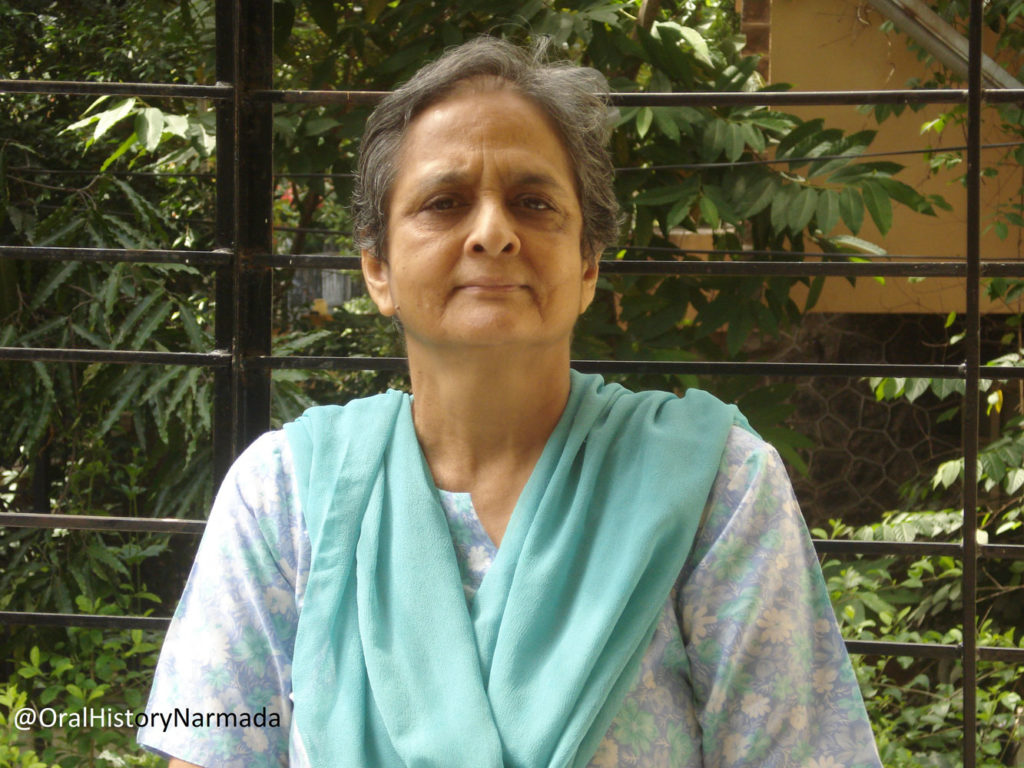
Dr. Vasudha Dhagamwar, a lawyer, scholar, researcher, writer and an activist was one of the earliest from outside the valley to visit and work in the interior adivasi belt of Akrani and Akalkuva in Maharashtra in the late 1970s and 80s on issues of land rights and displacement by Sardar Sarovar Project. She talks of the area and the people to be affected by the SSP in the early eighties, her role, the role of MARG and other organisations active in the area at that time.
Interview duration: 1:08:50
Language: Audio in English, Subtitles in Hindi
Ashok (bhai) Shrimali
Centre for Social Knowledge and Action (SETU), Ahmedabad, Gujarat
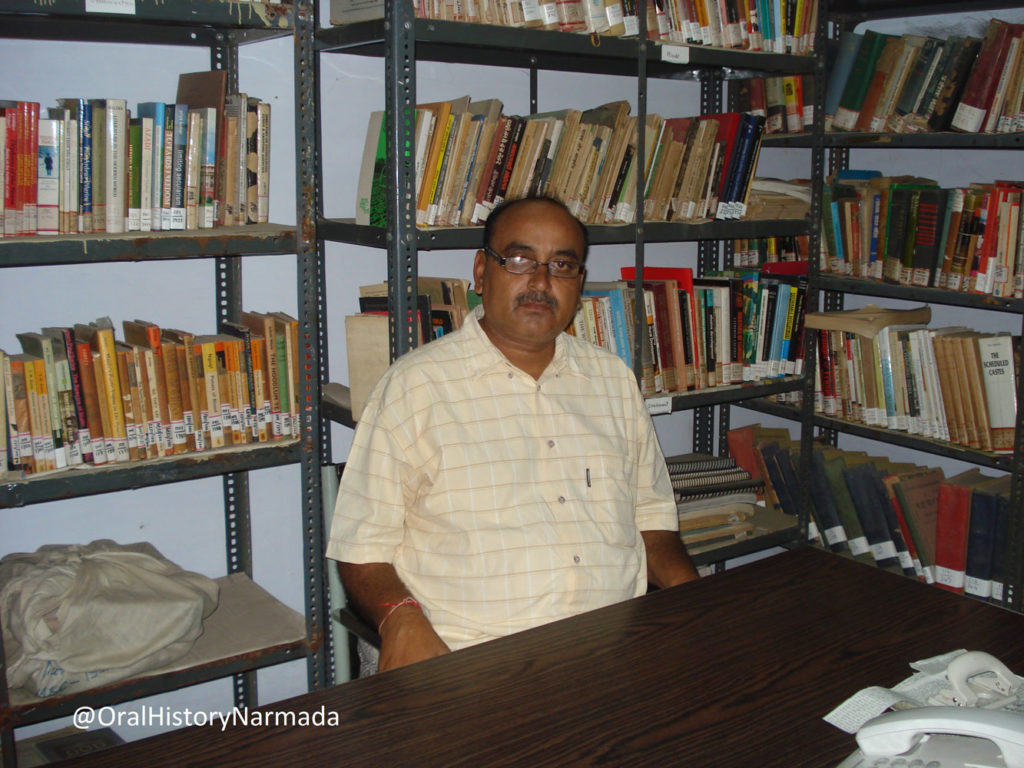
Ashok Shrimali one of the senior members of SETU, and a leading social-political activist of Gujarat is also the general secretary of Mines, Minerals & People. He talks about SETU’s role in the formation of the Narmada Dharangrasth Samiti (NDS) in the submergence villages of Maharashtra in the mid 1980s and in taking the issue of displacement by the SSP from local to international level.
Interview duration: 1:17:00
Language: Audio in Gujarati, Subtitles in English
Rahul Banerjee
Khedut Mazdoor Chetna Sangathan (KMCS), Indore, Madhya Pradesh (M.P.)
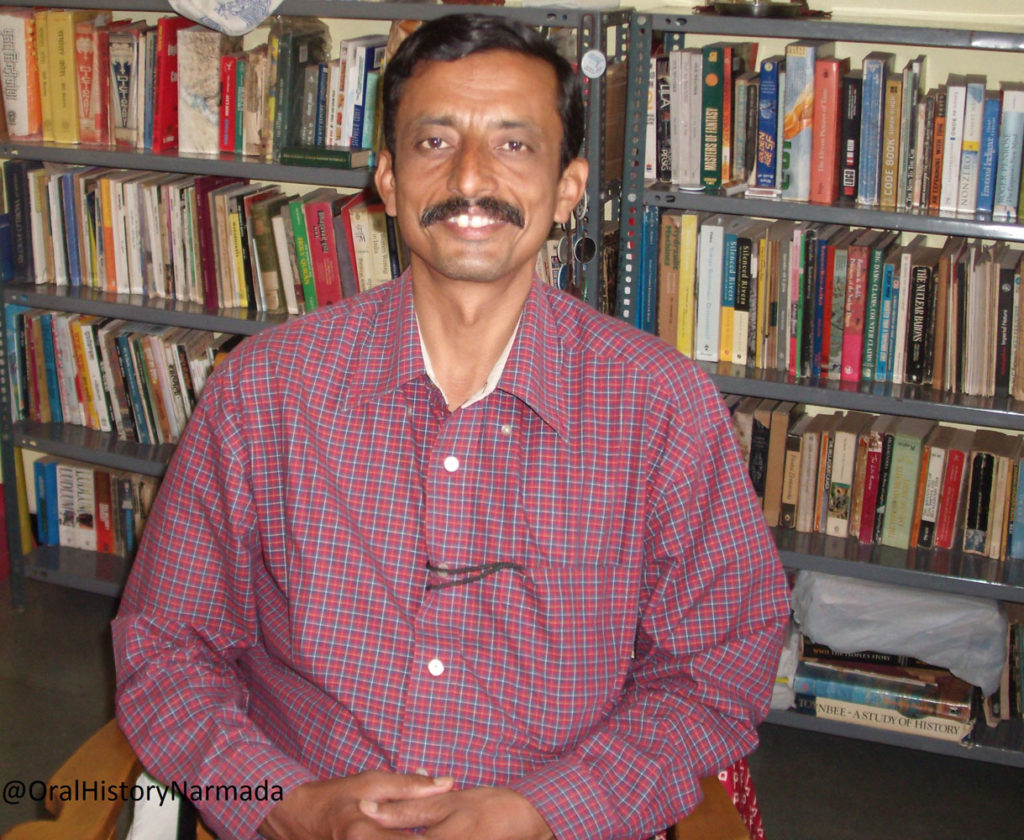
Rahul Banerjee, an engineer from IIT Kharagpur, a senior activist and a writer in his interview explains the formation of KMCS in the scheduled tribe areas of Alirajpur in M. P. in the early eighties, the struggle for adivasi rights by the KMCS and its subsequent involvement in the struggle against Sardar Sarovar Project.
Interview duration: 1:39:48
Language: Audio in English and Hindi, Subtitles in Hindi
Narsinghbhai Soni/Sonaben Tadvi
Kothi, Kevadia Colony affected Village

Narsinghbhai and Soniben are adivasi residents of village Kothi, one of the six villages whose lands were acquired for the project colony, the Kevadia Colony, when the foundation stone of the Sardar Sarovar Project (SSP) was laid in 1961. Large godowns, store houses, parking places, workers’ residential areas, officers’ quarters and related infrastructure was built on the lands of the adivasis who were till then living a sustainable and peaceful life on the banks of the river Narmada. The coming of the dam and related infrastructure changed their lives beyond comprehension. This interview throws light on how losing land to a mega dam project colony is not just loss of livelihood but also dignity and the very way of life the adivasis of the now Narmada district of Gujarat knew and lived. The adivasis of these six villages continue to live a life of great social, cultural and economic deprivation as their lands are now being diverted after the SSP got completed to the world’s tallest statue – The Statue of Unity.
This interview explains how the adivasis of the six villages were disposed of their lands and livelihood, how their drinking water sources were contaminated with the discharge of the sewer waters of the Project colony, how they fought and how has their life been since.
Interview duration: 0:49:47
Language: Gujarati, Subtitles in English
Late Gangaram (baba) Yadav
Submergence Village Chotabadada, Madhya Pradesh
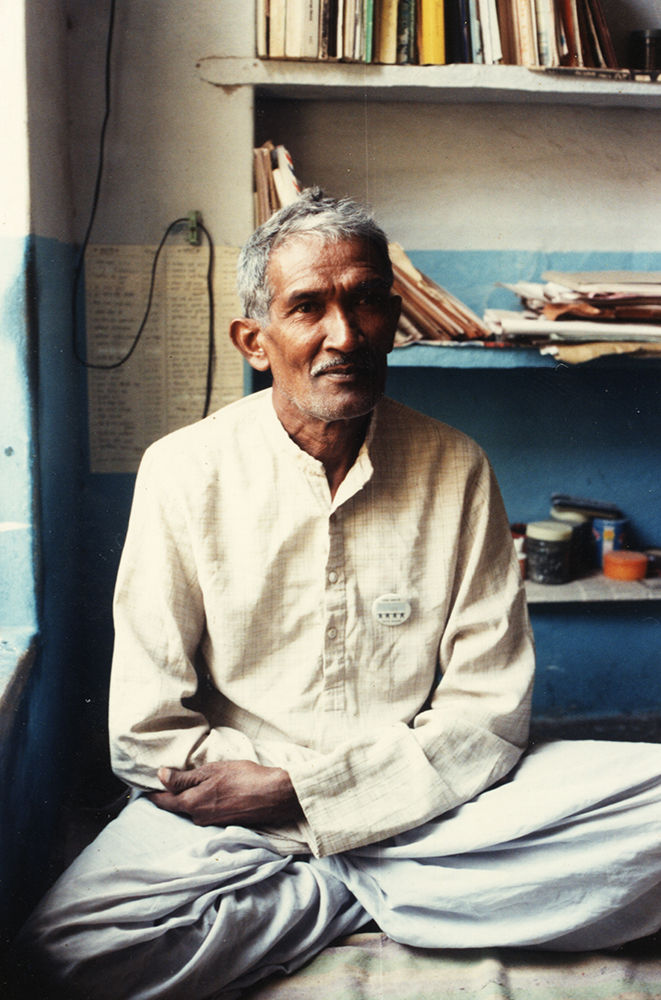
Gangarambaba had participated actively in the Nimad Bachao Andolan in Madhya Pradesh for the reduction of the height of the Sardar Sarovar Dam, then called the Navagam Dam- this was in the late 1970s. Gangarambaba was also one of the key members of Narmada Bachao Andolan (NBA) who managed the main center and office of the movement named Narmadai in the village Manibeli once the bastion of the NBA in the 1990s. The struggle by the NBA at Manibeli, the first village to submerge in the Sardar Sarovar dam in Maharashtra was unparalleled and Gangarambaba narrates this struggle as he was a part of it and was stationed at Manibeli during those trying times for several years. This interview helps us understand the impact of the failure of the Nimad Bachao Andolan in the late seventies and also helps us understand the early years of the NBA and the early struggle of the movement at village Manibeli.
Interview duration: 1:14:00
Language: Hindi, Subtitles in English
Summary of the Early History and Evolution of the Narmada Struggle
One of the earliest resistances by the people of the Narmada valley against the Sardar Sarovar Project (SSP) induced displacement was way back in the year 1961 when the foundation stone of the dam was laid by Pandit Jawaharlal Nehru. It was then that the lands of six adivasi villages were acquired for the construction of a helipad and the project colony (Kevadia colony) that the adivasi residents resisted.
Later as there was a dispute over the height of the dam and the sharing of Narmada waters among the riparian states of Madhya Pradesh (M.P.), Gujarat and Maharashtra, the Narmada Water Dispute Tribunal (NWDT) was set up to resolve the dispute in 1969. It was when the NWDT gave its award ten years later in 1979 that a spontaneous and a powerful struggle in M.P. called the Nimad Bachao Andolan sprung up, demanding a reduction in the height of the SSP. This struggle though fierce was short lived. Around this time itself, some of the veteran Gandhians and local leaders had formed the Narmada Ghati Navnirman Samiti (NGNS) in M.P. which had begun questioning the large dams on the Narmada as well as mobilising people around the issue in M. P. NGNS was one of the first organisations that began questioning the dams on the Narmada in M.P. comprehensively. While these mobilisations were mainly in the Nimad area (plains) of M.P., there was the Khedut Mazdoor Chetna Sangathan, (KMCS) that was active in the tribal villages of M.P. in Alirajpur tehsil, working on issues of tribals and forest rights. It was KMCS which took up the issue of displacement of tribal people on the banks of the Narmada in the submergence villages of Alirajpur subsequently.
By the early eighties people in Gujarat and Maharashtra had also begun raising concern regarding displacement and rehabilitation around SSP. This included groups and organisations like Arch Vahini, Rajpipla Social Service Society (RSSS), Multiple Action Research Group (MARG), etc. And later, organisations like Centre for Knowledge and Social Action (SETU) etc also got actively involved in the issue of SSP and displacement.
It was also in the early eighties that members of Kalpavriksh and the Hindu College Nature Club undertook a yatra along the river to study the environment impacts of large dams in the Narmada Valley.
All these groups played different, important and catalytic roles during this period in the Narmada valley, in raising issues around the SSP and in the formation of people’s struggles around the project.
The organisation of the affected people of Maharashtra, the Narmada Dharangrasth Samiti (NDS), was constituted in mid- eighties. It was only in the mid-eighties, that a more organised, coordinated and systematic organisation of the people of the affected villages came into being, coalescing around the NDS, NGNS and KMCS and this organisation spread across the submergence and affected villages in the three party states.
This united organisation of the affected people of the three states, their extensive support network and their struggle came to be popularly known as the Narmada Bachao Andolan (NBA) since the late eighties.
Narmada Bachao Andolan (NBA), the powerful people’s resistance against the Sardar Sarovar Project has been going on for over three decades now.